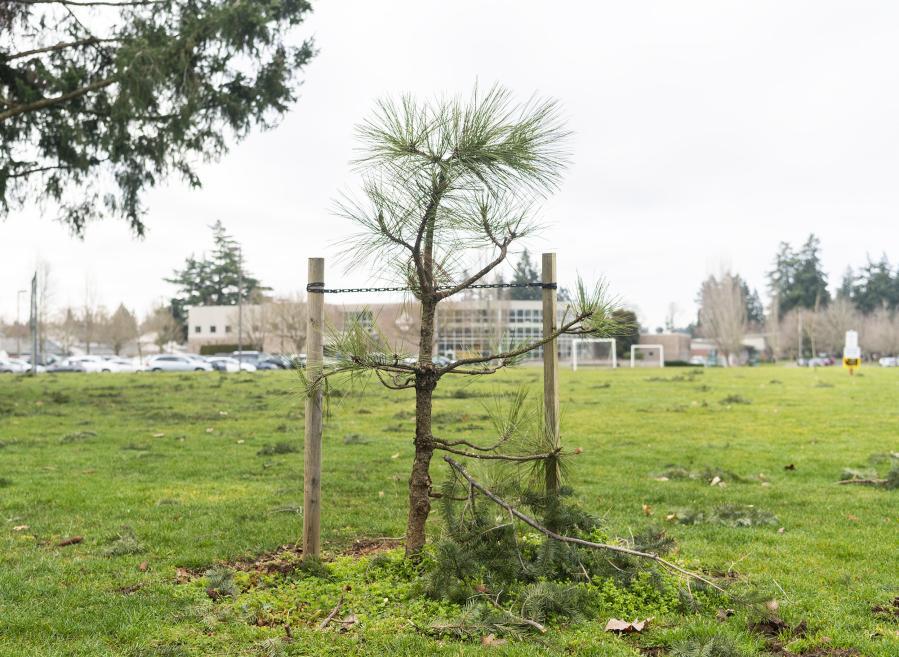In Short : The City of Vancouver is making progress in its goal to become carbon neutral by 2040. This initiative likely involves a comprehensive strategy, including renewable energy adoption, emissions reduction measures, and sustainable urban planning, demonstrating the city’s commitment to combating climate change
In Detail : Vancouver approved its Climate Action Framework 1 year ago
A year has passed since Vancouver approved its plan to reach carbon neutrality by 2040.
The Climate Action Framework, a list of nearly 90 actions approved by the city council in December 2022, is Vancouver’s leading light for curtailing greenhouse gas emissions at both the municipal and community levels. Most steps taken so far are intangible, but they are helping Vancouver inch toward its climate goals, city officials say.
Experts say cities’ influence on the environment is undeniable. Addressing urban spaces is low-hanging fruit for alleviating climate impacts, said Deepti Singh, assistant professor at Washington State University Vancouver’s School of the Environment.
“Climate resilience depends on what our urban environments look like,” she said. “Sustainability is more than just looking at emissions. It’s about resilience in the face of climate variability.”
Planning, planning, planning
Vancouver is grounding itself before making big leaps.
The city’s fabric today — ranging from how buildings are powered to how waste is processed — has been woven over generations. Stacey Dalgaard, Vancouver’s associate climate project coordinator, said morphing these systems to become carbon neutral will take time, a sentiment reiterated throughout Vancouver’s first Climate Action Framework progress report.
Government buildings are Vancouver’s largest source of municipal emissions, so the city is planning its shift from facilities’ gas-powered systems to other alternatives, such as by bringing in electricity from Clark Public Utilities’ Community Solar East project or retrofitting buildings. Staff are developing Vancouver’s first Green Building Policy, a guide for the construction of sustainable buildings.
The city’s second-largest emitter, its municipal fleet, includes 17 electric and hybrid vehicles. All city-owned diesel equipment now uses R99, often called “green diesel.” On a larger scale, the city is updating its transportation plan and working on so-called complete-street projects that incorporate pedestrian and bicycle paths.
Urban green spaces will become leafier with a grant to expand Urban Forestry’s workforce, and the city’s future landscaping may become cleaner with a pilot program testing electric tools. Officials are pushing to spread trees more equitably throughout the city. Even Vancouver’s wastewater could become a sustainable solution for powering buildings and fleets.
Vancouver’s two-year budget includes 37 climate-related projects totaling $11.7 million. The city has been awarded $1.9 million in state, federal and regional funds for similar work.
The city’s efforts so far are on track with steps outlined in the climate framework, said Rebecca Small, Vancouver’s senior policy analyst.
Vancouver will be better able to measure progress when it updates its greenhouse gas emission inventory, last compiled in 2019. Officials expect that to be completed by summer 2024. That’s also when they plan to launch new heat-safety strategies for vulnerable populations and, later, a youth climate leadership program.
Climate trends, equity
In the past decade, the region’s hottest days and warmest nights have soared above long-term averages, while cold and cool nights have dropped below average.
According to the Fifth National Climate Assessment, Washington’s air temperatures have warmed by nearly 2 degrees Fahrenheit since 1900. The report predicts annual average temperatures in the Northwest — Washington, Oregon and Idaho — will increase at least 4.7 degrees Fahrenheit by 2080. The report also outlines a “very high” scenario, in which the temperature would jump 10 degrees Fahrenheit.
In an attempt to avert this dire warming, Washington officials pledged to reduce emissions 95 percent by 2050.
Buildings and roads create urban heat islands by absorbing sunlight. Higher temperatures also result in a greater production of surface ozone, the product of chemical reactions between pollution and sunlight. Impervious surfaces such as parking lots and sidewalks lead to more flooding, carrying pollutants into rivers and reservoirs.
Singh explained that although climate influences can seem obscure, they are actually easy to spot. Air pollution, for example, manifests as soot from vehicle exhaust pipes or plumes from industrial buildings. Flooding can erode roads and slopes, or increase toxicity within lakes.
These impacts often disproportionately hit people of color and those with low incomes, she said.
Vancouver’s climate-action progress report pledges to involve vulnerable communities as the city pursues its next steps, which include updating the plans to address natural hazards like flooding and fires.
“Climate issues are not separate from societal issues,” Singh said. “When we’re thinking about sustainability, it is critically important to think about the equity and justice implications of any actions that we take.”

